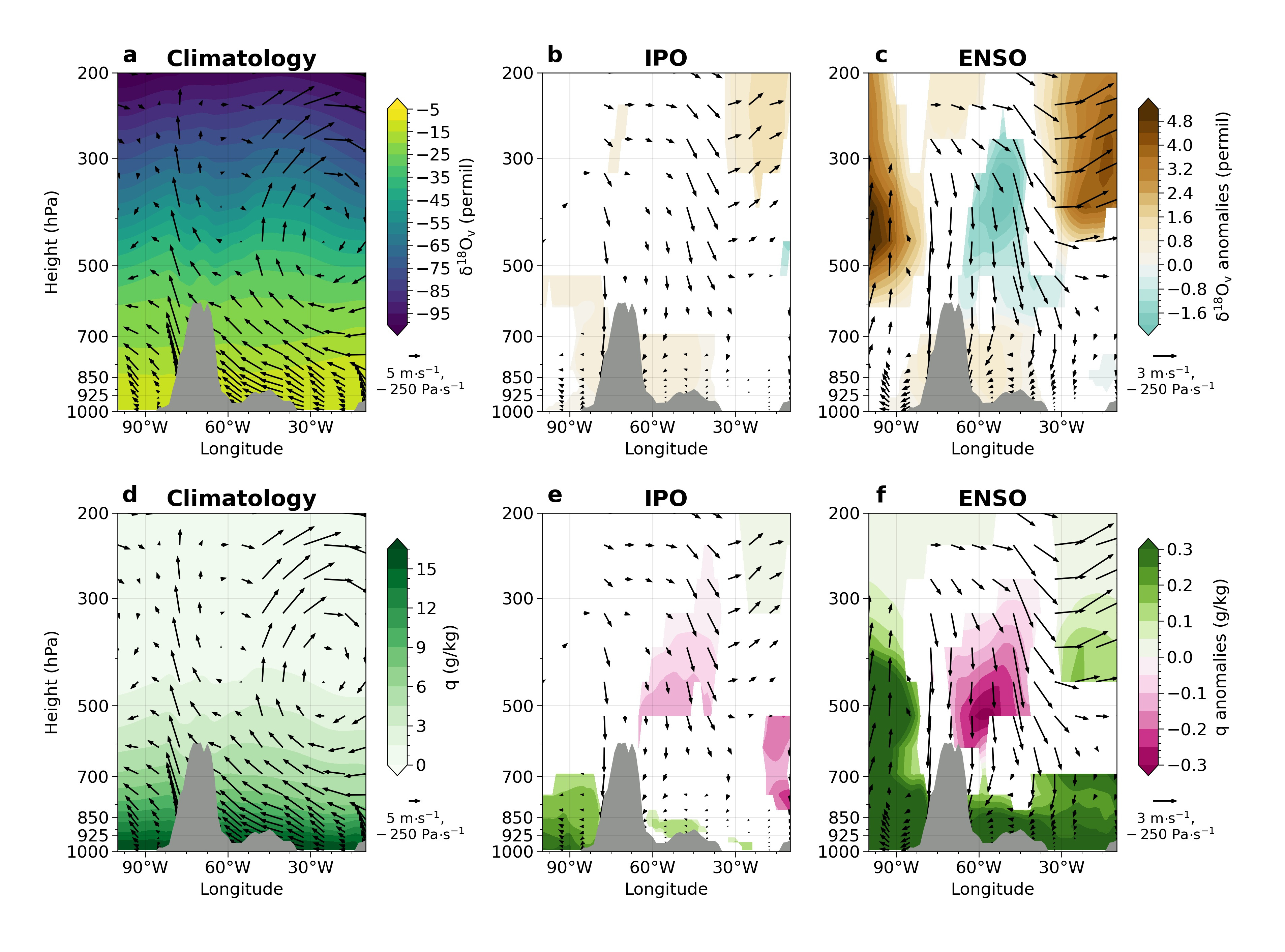Abstract
The summertime rainfall associated with the South American monsoon is important for the hydropower and agricultural sectors in South America as well as to the traditions of many Amazonian indigenous cultures. The amount and spatial extent of the monsoon rainfall patterns are influenced by a variety of factors, including changes in Pacific Ocean sea surface temperatures. While evaluating this link has been mostly limited to meteorological observations, the analysis of heavy and light oxygen atoms, called isotopes, in natural archives such as cave deposits, lake sediments, glacier ice, and tree rings, can help extend this relationship further back in time. In combination with climate models, the ratio between heavy and light isotopes can provide insight for the link between the Pacific Ocean and South American water cycle changes on interannual to multidecadal timescales. This allows us to better understand how the Pacific has influenced the South American monsoon in the past. It also allows us to better define the range of natural climate variability against which future changes can be compared.
Key Findings
- South American summer monsoon variability is influenced by multidecadal and interannual variability of Pacific sea surface temperatures
- Paleoclimate records combined with climate model synthesis enhance the interpretation of Pacific Ocean–South America teleconnections
- The development of new paleoclimate records in South America can be informed by the archived signals of Pacific multidecadal variability


Project products:
This researched was published in the Journal of Geophysical Reseaerch: Atmospheres and the code is available from Zenodo:
-
Orrison, R., Vuille, M., Cauhy Rodrigues, J., Strı́kis, N., Cruz, F., Andreu-Hayles, L., Rodriguez-Caton, M., (2024), Pacific Multidecadal and Interannual Variability influences on South American Monsoon δ18O, Journal of Geophysical Research: Atmospheres, 129(17), e2024JD040999.
-
Orrison, R., Pacific influence on d18o in South American Monsoon precipitation (v1.0.1). Zenodo.